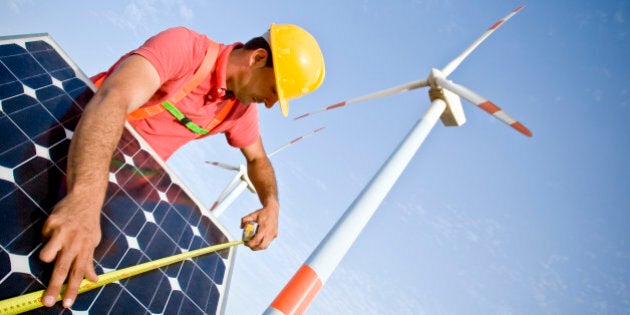
There is something very important that most people don't know about renewable energy technologies. While many of these technologies have existed since humanity started to harness the power of the wind and the sun to help us do work, they all owe their current capabilities to the existence of rare earth elements.
Neodymium, dysprosium, lanthanum, cerium sound like the names of some magical characters in Peter Jackson's latest Tolkien adaptation but they're actually the names of rare earth elements.
Rare earth elements and a handful of other elements (like lithium and platinum) are the "magic" ingredients that make our modern renewable energy technologies possible.
- Neodymium is secret sauce that makes high-power permanent magnets a reality. Those magnets are what allow a wind turbine to convert the power of the wind into electricity.
- Dysprosium allows these permanent magnets to operate at the high temperatures critical for the operation of large wind turbines and electric vehicles.
- Lanthanum and Cerium are what make catalytic converters work.
Your cell phone, your LCD screen, your hospital's PET scanner all depend on the existence of rare earths.
Some argue that the name "rare earths" is a misnomer because these elements are found in large quantities on virtually every continent. But unlike a lot of ores, rare earth metals are typically found in very low concentrations, mixed with others metals and metalloid compounds. This makes them hard to mine and refine.
The problem is that unlike the magic ingredients in your recipes, "a little dash won't do ya" in renewable energy technologies. A single large wind turbine (rated at about 3.5 megawatts) typically contains around 600 kilograms of rare earths. This means that if we really want to move away from fossil fuels as an energy source, we will need tremendous amounts of these rare earths.
OK, you ask, what is the point of this article? Well, the renewable energy boom has a dirty little secret and I use the word "little" in an ironic sense. You see, the process of refining the raw ore to a usable state can involve a lot of steps and, depending on how you do the work, it can generate a tremendous amount of toxic waste in the process.
Because of this "feature," virtually all of the world's rare earths come from some of the least developed portions of China and their production is poisoning the atmosphere and killing China's animals and people. It is hard to look at the pictures in the BBC feature on the Baogang Steel and Rare Earth Complex in Baotou and not feel ashamed about our part in creating this growing human health and ecological disaster.
We, as Canadians, have clamoured for renewable energy technologies while refusing to do our part to supply the raw materials necessary for their implementation. Central British Columbia, Northern Quebec, Northern Saskatchewan, all have incredibly rich deposits of rare earth metals that we have chosen, as Canadians, not to develop.
If North American and European countries are really interested in renewable energy technologies then it is up to these countries to carry some of the environmental freight associated with them. Asking lesser developed countries to deal with the negative consequences of the mining and refining of rare earths is the ultimate in hypocrisy. We ask for clean technologies but refuse to get our hands dirty in the process.
We possess the best regulatory and technical abilities in the world, but leave this environmentally risky technology to the countries with the laxest environmental standards and little or no government oversight.
The arguments I hear are that companies are not willing to invest in countries with strict regulatory requirements, but if there is one area where government support would appear necessary it is the development of rare earth capabilities. Like the Swan Hills facility in Alberta which, while controversial, addressed a serious environmental need, so do we need to mine and refine rare earths in North America and Europe.
As for my friends in the environmental industry, you need to show a willingness to stand behind your words. If you want wind energy, advanced photovoltaic solar and better battery technologies and don't want to be seen as hypocrites, then get behind the drive to win the social licence for rare earth mining, refining and research.
ALSO ON HUFFPOST: